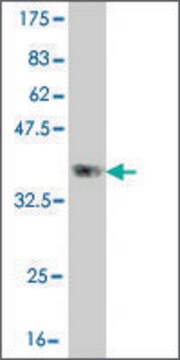24-1051
Ácido perclórico
suitable for determination of toxic metals, 60.0-62.0%
Sinônimo(s):
PCA
About This Item
Produtos recomendados
forma
liquid
adequação da reação
reagent type: oxidant
disponibilidade
available only in Japan
concentração
60.0-62.0%
densidade
1.54 g/cm3
adequação
suitable for determination of toxic metals
cadeia de caracteres SMILES
OCl(=O)(=O)=O
InChI
1S/ClHO4/c2-1(3,4)5/h(H,2,3,4,5)
chave InChI
VLTRZXGMWDSKGL-UHFFFAOYSA-N
Procurando produtos similares? Visita Guia de comparação de produtos
Palavra indicadora
Danger
Frases de perigo
Declarações de precaução
Classificações de perigo
Acute Tox. 4 Oral - Met. Corr. 1 - Ox. Liq. 1 - Skin Corr. 1A - STOT RE 2
Código de classe de armazenamento
5.1A - Strongly oxidizing hazardous materials
Classe de risco de água (WGK)
WGK 1
Ponto de fulgor (°F)
Not applicable
Ponto de fulgor (°C)
Not applicable
Certificados de análise (COA)
Busque Certificados de análise (COA) digitando o Número do Lote do produto. Os números de lote e remessa podem ser encontrados no rótulo de um produto após a palavra “Lot” ou “Batch”.
Já possui este produto?
Encontre a documentação dos produtos que você adquiriu recentemente na biblioteca de documentos.
Nossa equipe de cientistas tem experiência em todas as áreas de pesquisa, incluindo Life Sciences, ciência de materiais, síntese química, cromatografia, química analítica e muitas outras.
Entre em contato com a assistência técnica



